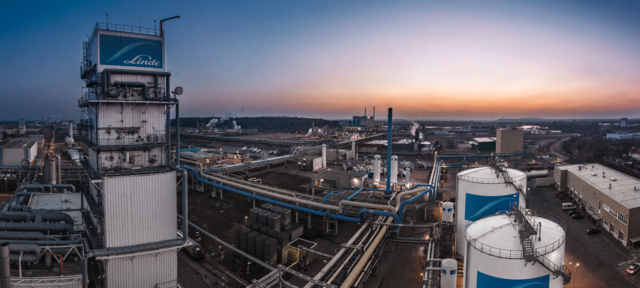The LINDE PLANTSERV
® experts started with a detailed asset health check before developing modification proposals. This included dropping the operating pressure by several bar at a key operating point to reduce the need for air compressors. Based on this new pressure level, the team then checked whether the process flow would still function safely and reliably. This entailed taking a close look at all key components, including the heat exchanger, compressor, turbine, pump and critical valves.
The team evaluated six different modification paths, benchmarking them to compare cost, savings, ROI, safety performance and feasibility. As Schwenk points out, the plant specialists were well aware that “the volume of argon produced depends heavily on the process parameters, in other words the way the plant is operated. The production volume of argon can fluctuate enormously, ranging between 50 and 90 percent.” Around one percent of the air is composed of argon. Nitrogen and oxygen account for the lion’s share at around 80 and 20 percent respectively. Simply pumping more air into the plant would not be productive, however, as that would also increase the oxygen yield along with the energy costs required to compress and liquefy it – and a higher oxygen yield was not the aim. For Schwenk, the main challenge lies in “fine-tuning the process parameters in order to maximize the argon yield while minimizing the energy bill”. So, for instance, the LINDE PLANTSERV
® experts discovered that a drop in pressure could reduce compression requirements and thus energy costs – without requiring any equipment investments other than a new pipe.
